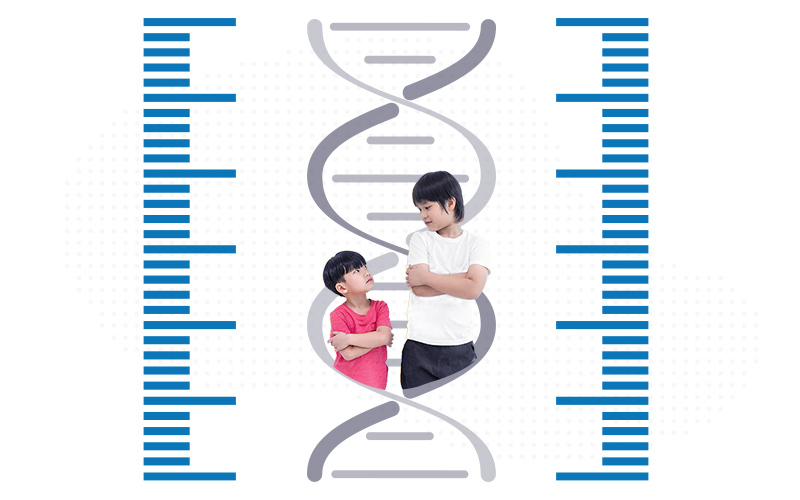The genetics of height: Coming close to cracking the code

More than 20 years ago, as a pediatric endocrinology fellow at Boston Children’s, Joel Hirschhorn, MD, PhD, saw many children with unusually short stature, and would often tell parents that their child was growing slowly because of genetic factors. But no height-related genes had yet been identified — in fact, scientists believed there were so many genes influencing height that it would be nearly impossible to find them individually.
“After about the 20th patient, I thought, ‘Hey, I’m working in a place that can figure this out,’” says Hirschhorn, now chief of Boston Children’s Division of Endocrinology. As a postdoctoral researcher at the Broad Institute of Harvard and MIT, he had access to advanced genetics tools. He also knew that height is easy to measure, lending itself to understanding traits produced by multiple genes acting together.
A tall order
Hirschhorn turned to genome-wide association studies (GWAS), in which scientists scan the whole genomes of entire populations to track down associations between traits and genetic variants. But with height influenced by so many genes, it would take a very large population to pick up signals pointing to specific genes.
That’s where the GIANT consortium comes in. Over the past two decades, the consortium, led by Hirschhorn, has mounted larger and larger GWAS studies of height. Now, together with 23andMe, it has assembled data from nearly 5.4 million people — the largest cohort to date, more than seven times the size of previous studies.
“Even the most optimistic among us didn’t think we’d get this big this fast,” Hirschhorn says.
The new analysis revealed 12,111 places in the genome where a variation in a single base or “letter” of DNA (known as single nucleotide polymorphisms or SNPs) tracked with height. Together, these SNPs accounted for 40 percent of height variation among people of European ancestry, and 10 to 20 percent of height variation among people of non-European ancestry.
Rather than being spread throughout the genome, the SNPs clustered within regions covering just over 20 percent of the genome, Hirschhorn and his colleagues found. In particular, SNPs were found near genes associated with skeletal growth disorders. For example, 25 variants clustered near the ACAN gene, which is associated with skeletal dysplasia, and others implicated biological pathways that impact skeletal growth plates.
New heights for GWAS
Hirschhorn thinks the study, published in Nature, could one day help physicians better predict children’s adult height and identify those who aren’t growing as predicted and might have a hidden condition affecting their growth and health, such as celiac disease or hormone deficiencies. Extending its work, the GIANT team can now begin to trace how individual variants in the pinpointed genomic regions impact height and look for rarer, more complex variants that may account for the height variability that remains unexplained.
The researchers also emphasize the need for future studies to include more people of non-European ancestry, who made up just about 20 percent of the current cohort. Nonetheless, the results are a milestone for GWAS as a genetic research method, illustrating the potential for large GWAS studies to uncover the biological basis for many common, complex disease traits.
Even Hirschhorn initially doubted that GWAS could ever provide enough information to be predictive about height. “We succeeded beyond our wildest dreams,” he says. “So now I get the chance to prove myself wrong.”
Explore other research in the Division of Endocrinology
Related Posts :
-

Why I'm tall and you're short: GIANT effort finds rare, potent height genes
Height is the “poster child” of complex genetic traits, meaning that it’s influenced by multiple genetic variants working together. ...
-

Can we harness intestinal cells to treat endocrine disorders?
Enteroendocrine cells punch above their weight. Comprising just about 1 percent of intestinal cells, they produce, as a group, around 15 different ...
-

Charting a new path for pediatric thyroid cancer treatment
Thyroid cancer is the most common type of endocrine cancer in children. Because it is bilateral — affecting both sides (...
-

Feeding and growth difficulties in children: When to refer
Parents are bombarded with so much online information about the best ways to feed their children the nutrients they need ...





